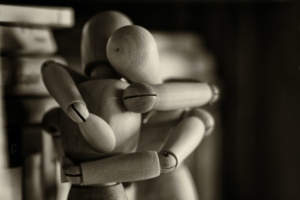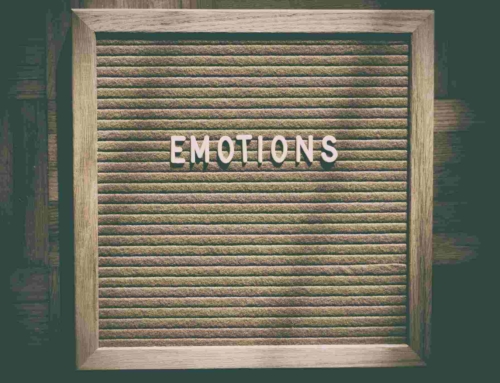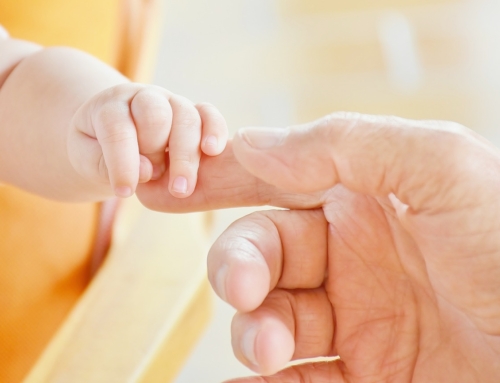 Adult attachment disorders refer to the various difficulties associated with reading emotions, showing affection, and trusting others. These disorders often begin in childhood and can affect everything from a person’s self-esteem to relationship satisfaction. Treatment can help people become more aware of their attachment styles and learn to communicate their needs appropriately with others.
Adult attachment disorders refer to the various difficulties associated with reading emotions, showing affection, and trusting others. These disorders often begin in childhood and can affect everything from a person’s self-esteem to relationship satisfaction. Treatment can help people become more aware of their attachment styles and learn to communicate their needs appropriately with others.
The process of developing healthy emotional relationships is a key factor in achieving happiness and improving the quality of life. However, a significant portion of the human population does not have the ability to connect with other individuals and form meaningful relationships. This condition is called attachment disorder. Although this condition usually develops in childhood, it can progress into adulthood if not recognized and addressed.
How Do Attachment Disorders Develop?
For over 70 years, psychologists have recognized that the ability to form emotional relationships begins in early childhood. A healthy relationship between a child and their caregiver lays the foundation for a healthy bond throughout a person’s life. “If you come from a well-connected world, you’re more likely to develop good connections,” says psychotherapist Toby Ingham.
On the other hand, he says, “people who have had traumatic childhood experiences often have attachment issues.” Because they have difficulty forming attachments, these people find it difficult to maintain close relationships and may have attachment issues.
What is Attachment Theory?
Attachment theory refers to how we connect, trust, and attach to others. This theory focuses on relationships, such as the dynamic between a child and a caregiver or two romantic partners. In the therapeutic context, therapists can explore the connection between the client and themselves.
There are four types of attachment styles:
- Secure Attachment: Generally positive emotional attachments with self and others
- Anxious/preoccupied attachment: Desire for intimacy, anxiety over relationships, feeling that others are emotionally unavailable to them
- Avoidant/repulsive attachment: Struggles with intimacy, uncomfortable with closeness, strives for high levels of independence
- Disorganized attachment: Intense and chaotic relationship patterns that usually consist of a combination of wanting to be close and pushing people away
These attachment styles emerge in childhood based on the way a parent relates to the child, and how the child interprets the interaction. They continue to influence the types of relationships people have throughout their lives.
The Profound Effects of Attachment Disorders
In adults, attachment disorders can do more than disrupt relationships. Several studies have linked attachment
disorders to other physical, mental, and social problems.
Alexithymia: This is a subclinical personality trait in which patients lack emotional awareness. Such patients have difficulty identifying, expressing or even feeling emotions. They can seem cold and aloof, making it more difficult to form and maintain relationships. Insecure attachment is considered an important factor in the development of alexithymia.
Depression and anxiety: Patients with attachment disorders tend to internalize emotions, making them vulnerable to developing further psychiatric problems. Researchers who conducted a meta-analysis reported that worried and unresolved attachment has a significant association with depression.
Researchers who conducted another study reported that insecure attachment, especially anxious/preoccupied attachment, contributes to emotional dysregulation and increased anxiety symptoms.
Chemical dependence: Patients with attachment disorders are more likely to develop addictive habits. “Attachment breakdown is generally associated with addiction,” says Dr. Ingham, adding that addiction may be one of the self-isolating responses to the abnormal attachment. In fact, the authors of one study reported that increased alcohol consumption served as an emotional coping strategy for adults with attachment disorders and alexithymia.
Eating Disorders: There is a strong association between insecure attachment and several types of eating disorders, including anorexia, bulimia, and binge eating disorder. This is attributed to issues of personal identity and guilt.
Types of Attachment Disorders in Adults
 The Diagnostic and Statistical Manual of Mental Disorders (DSM-5) lists two childhood attachment disorders. As with all mental illnesses, symptoms may fade and subside over time.
The Diagnostic and Statistical Manual of Mental Disorders (DSM-5) lists two childhood attachment disorders. As with all mental illnesses, symptoms may fade and subside over time.
However, an adult who suspects an attachment disorder should report that the first symptoms appeared between nine and five months of age. In some cases, children receive appropriate treatment. Otherwise, the individual may suffer from long-term self-esteem and relationship consequences that persist into adulthood.
Reactive attachment disorder in adults
Reactive attachment disorder (RAD) is a rare condition that begins when a child does not maintain a healthy attachment to caregivers. Those who struggle with RAD find little or no comfort in other people. Subsequently, they rarely show positive emotions when interacting with their caregivers. Instead, they can present themselves as sad, irritable, or unhappy. This lack of good attachment often occurs when the child’s needs are not consistently met. Most research on RAD focuses on symptoms in young children. The DSM-5 states that the signs must be observed before the age of five.
Common symptoms of RAD include:
- Rarely seeking or responding to comfort when they are sad
- Lack of ability or willingness to express positive emotions
- Intense irritability, fear, or sadness towards caregivers (seen in young children)
- A history of childhood neglect, abuse, or prolonged separation from caregivers
- Witness abuse that happens to other people
Disinhibited Social Engagement Disorder in Adults
Disinhibited social engagement disorder (DSED) is a disorder that affects a person’s ability to form meaningful and lasting relationships with others. Children with this condition do not display the normal fear associated with strangers. Instead, they tend to be overly friendly or worried about getting the stranger’s attention.
DSED develops in childhood and is often a response to the lack of a consistent caregiver. Some children with this condition come from institutions such as orphanages or shelters and receive very little personal attention.
Common symptoms of DSED include:
- Overly reactive excitement when interacting with new people.
- Overly friendly, talkative, and likes to touch strangers in ways that are outside of cultural norms or age appropriate.
- Lack of worry about being left alone with a stranger and feeling safe leaving him or her.
- Little interest in contacting caregivers in emotionally difficult times.
How to Help a Partner with an Attachment Disorder
As a loved one, you are not responsible for “fixing” your partner’s disorder. This means you can be an anchor of support and compassion as they work on their recovery. Patience and empathy are key to offering support. It’s important to check in with your partner and maintain open communication to determine what’s working (or not).
 With that in mind, here are some tips on how to help a partner with an attachment disorder:
With that in mind, here are some tips on how to help a partner with an attachment disorder:
- Commit to learning more about attachment styles and attachment disorders.
- Listen actively and openly when they express their feelings.
- Avoid harsh accusations or abuse.
- Specifically, ask your partner how you can best support them.
- Set healthy boundaries that respect your integrity and personal needs.
- Regularly express your gratitude for your relationship and the qualities of your partner.
- Do intimacy-building exercises.
- Consider getting couples counseling.
Group psychotherapy is also an option for treating attachment disorders. The group often serves as a secure base for attachment and operates on the principle of removing resistance to secure attachment rather than directly promoting secure attachment.
The group leader acts as a “maturation facilitator,” encouraging the group to verbalize their feelings and promoting emotional self-regulation. This process facilitates developmental maturation that may have been hindered by their attachment issues.
As for whether medications play a role, “it depends on whether there are specific issues the medications can help with,” says Dr. Ingham. “Particular psychiatric disorders such as anxiety or depression may benefit from concomitant medications.
If the patient shows signs of these disorders, it is best to obtain an appropriate diagnosis from a psychiatrist who will prescribe appropriate medications.” Of course, medication cannot replace psychotherapy. Careful planning and coordination of treatment is necessary for patients with complex problems.
Getting Help for Attachment Disorders
Attachment disorders can be difficult, but treatment can help. You can learn to build meaningful and authentic relationships with others. It’s also possible to learn how to start trusting people again, even if you’ve always struggled to do so.
Therapy can make a big difference in helping you take the first step in the right direction. If you or your partner suspect that you may have an attachment disorder, do not hesitate to contact our offices and get in touch with a counselor.










